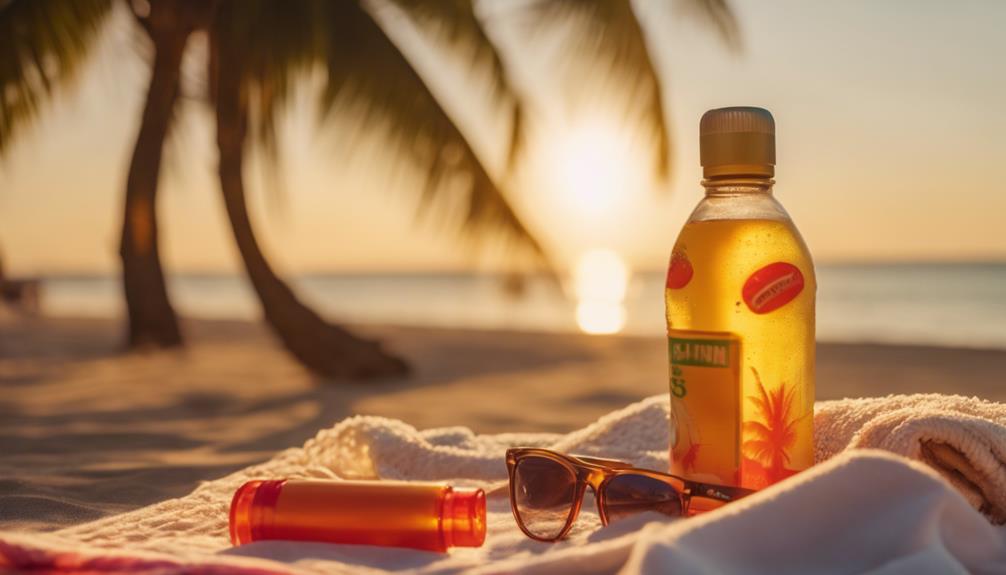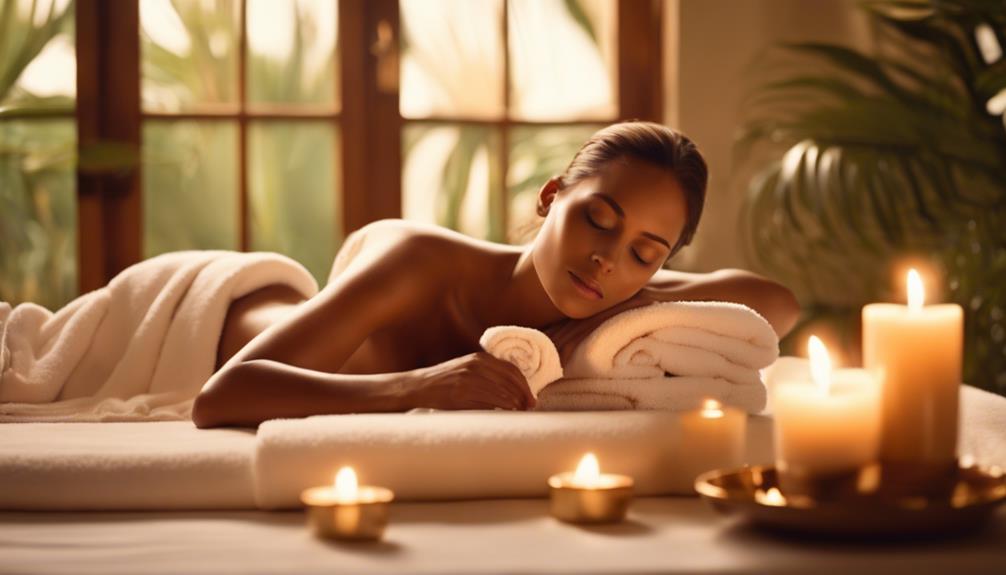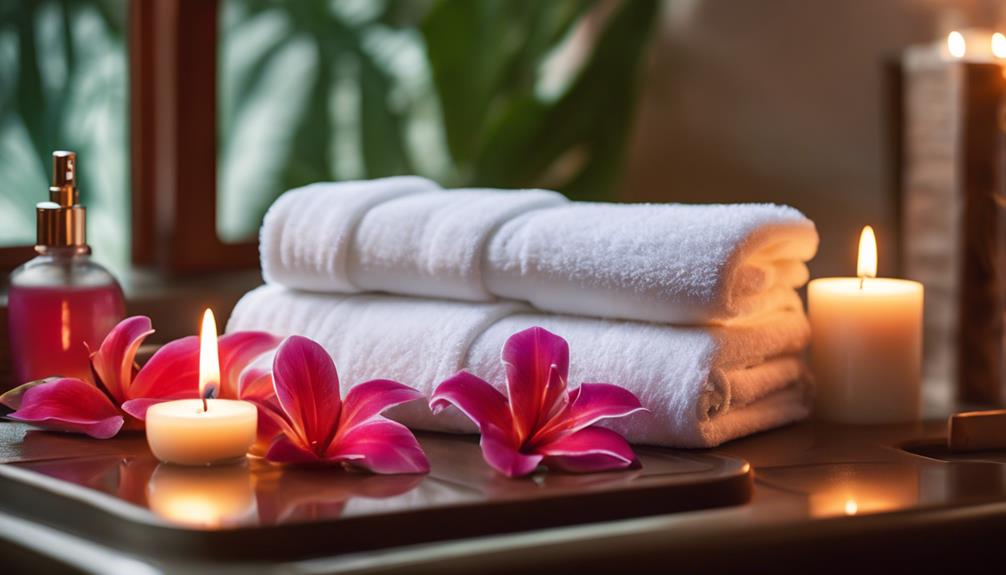Wanna reveal the secrets to that deep tan? First, choose the right tanning bed! High-pressure beds work fast and give intense color. But hey, mixing in some medium-pressure sessions helps balance it out. Don't forget your skin type when you're picking bronzers; they can really amp up your glow. And remember, hydration is key—drink up! Keep your sessions short to avoid looking like a lobster, and always wear protective eyewear. If all that sounds great, you're in luck because there's a whole world of tanning tips waiting for you that'll get you glowing in no time!
Key Takeaways
- Choose high-pressure tanning beds for quick and deep color results while minimizing session time.
- Incorporate medium-pressure sessions to maintain a balanced and even tan.
- Use bronzers that enhance UVA rays to maximize the depth and longevity of your tan.
- Limit tanning sessions and allow skin recovery time to prevent overexposure and ensure better color retention.
Tanning Bed Types Overview
When choosing a tanning bed, you'll encounter four main types: high-pressure, medium-pressure, low-pressure, and bronzing beds, each offering unique features to help you achieve your desired tan.
High-pressure beds are like the VIP section of tanning—they get you a deep tan fast!
Medium-pressure beds balance things out, giving you a nice glow without as much intensity.
If you're just starting, low-pressure beds are perfect, letting you take your time and build that tan gradually.
Finally, bronzing beds pack in the UVA rays for a long-lasting color.
Maximizing Tanning Bed Effectiveness

To get the most out of your tanning bed experience, understanding how to effectively use each type can greatly enhance your results.
First, know your bed! High-pressure beds give you a speedy tan, while medium-pressure ones are perfect for a balanced glow. Don't forget to mix it up—switch between levels to keep your tan fresh and even.
Also, timing is key! Start with shorter sessions to avoid looking like a lobster. And hey, don't skip the protective eyewear; your eyes deserve some love too!
Remember, hydration is essential, so drink water before and after. With a little patience and smart planning, you'll be rocking that sun-kissed look in no time.
Now, let's get glowing!
Choosing the Right Bronzer
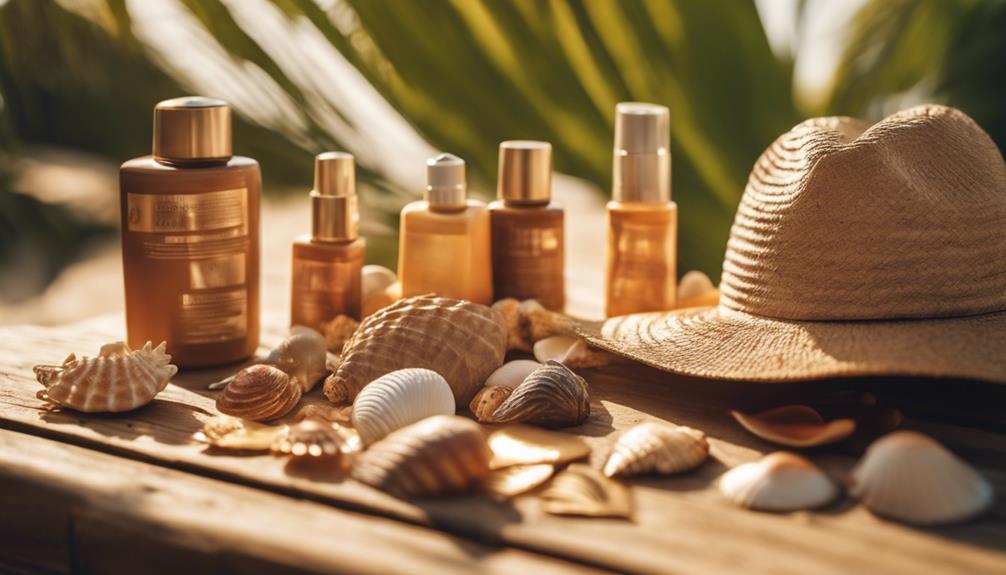
Selecting the right bronzer can greatly enhance your tanning results, ensuring you achieve that deep, radiant glow while protecting your skin. You don't want to end up looking like a streaky mess, right?
So, here are three tips to help you choose wisely:
- Skin Type Matters: Consider whether your skin is oily, dry, or somewhere in between, as different bronzers cater to specific needs.
- Choose Your Tone: Go for a bronzer that complements your skin tone. A warm bronzer works wonders for cool skin tones, while a cool bronzer suits warmer skin.
- Check the Ingredients: Look for bronzers with skin-friendly ingredients, like aloe or vitamins, to nourish your skin while you tan.
Happy bronzing! You're one step closer to that sun-kissed look!
Safety Practices for Tanning

Choosing the right bronzer is just one part of the tanning journey; prioritizing safety practices is equally important to protect your skin during the process. After all, nobody wants to end up looking like a lobster!
First, limit your tanning sessions—too much time can hurt your skin. Always wear protective eyewear; those UV rays can be sneaky!
Next, know your skin type; some beds are stronger than others, and you don't want to overdo it. Don't forget to check your skin regularly for any changes—better safe than sorry, right?
Exploring Tanning Alternatives

While tanning beds offer quick results, exploring alternatives like stand-up booths, spray tans, or at-home lotions can provide a safer and more convenient way to achieve that sun-kissed glow.
You don't want to end up looking like a lobster, right? Here are three awesome alternatives to evaluate:
- Stand-Up Booths: These let you tan all around without lying down. Plus, you can dance a little while you're at it!
- Spray Tans: Fast and customizable, spray tans give you a gorgeous glow without the UV rays. Just don't forget to hold your breath when they spray your face!
- At-Home Lotions: Perfect for those who love convenience, these lotions let you control how dark you get. Just remember to blend!
Trending Tanning Products
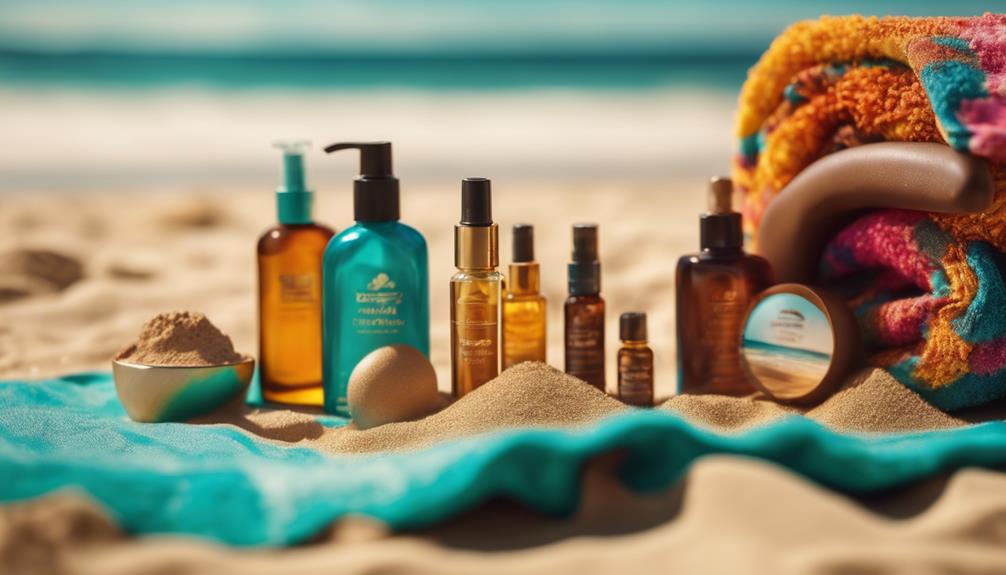
Many are turning to trending tanning products that promise deeper, longer-lasting results while prioritizing safety and convenience.
You've probably seen those super cute spray tan booths popping up everywhere, right? They're quick, easy, and give you that sun-kissed glow without all the UV drama.
And don't forget about those intensifier lotions—they're like magic potions for your skin! Just slather some on before hitting the tanning bed, and watch your tan deepen faster than a summer sunset.
Plus, there are even at-home tanning options that let you glow while binge-watching your favorite show!
Tips for Achieving a Deep Tan
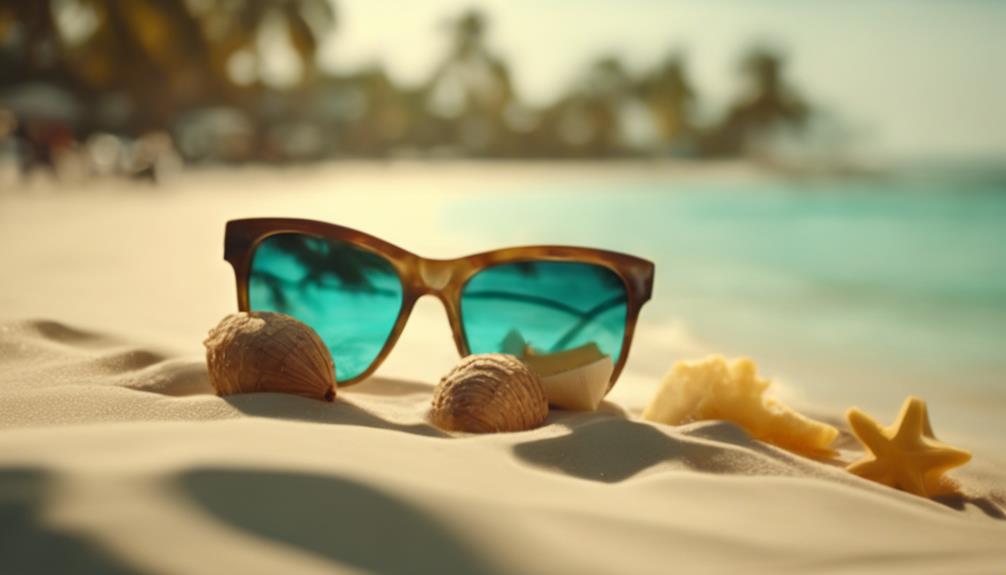
To achieve a deep tan, combine the right tanning bed type with effective bronzer lotions and smart session strategies for ideal results. Trust me, you won't regret it! Here are three tips to get you glowing:
- Choose the Right Bed: High-pressure beds work wonders for quick, deep color, but mix in some medium-pressure sessions for balance.
- Pick the Right Bronzer: Look for lotions that enhance UVA rays, so you get that sun-kissed look without the burns.
- Don't Overdo It: Limit your sessions to avoid looking like a lobster! Give your skin some time to soak in the color.
Follow these tips, and you'll be rocking that deep tan in no time! Who doesn't want to look like they just got back from a tropical vacation?
Frequently Asked Questions
How Often Should I Tan for the Best Results?
To achieve the best results, you should tan 1-3 times a week, depending on your skin type and tanning goals. Always monitor your skin's response and adjust frequency to prevent overexposure and maintain healthy skin.
Can I Tan With Makeup or Lotion on My Skin?
You shouldn't tan with makeup or lotion on your skin, as it can block UV rays and lead to uneven results. Always start with clean skin for the best tanning experience and ideal results.
What Skin Types Are Most Suitable for Tanning?
If you have fair or light skin, you're more likely to burn, so be cautious with tanning. Olive and darker skin types usually tan better, absorbing UV rays without burning, making them more suitable for tanning.
How Can I Maintain My Tan After Tanning Sessions?
To maintain your tan after sessions, moisturize daily, avoid hot showers, and use tan-extending lotions. Stay hydrated and limit sun exposure to keep your color vibrant while preventing peeling and fading. Enjoy your glow!
Are There Any Foods That Enhance Tanning Results?
Did you know that foods rich in carotenoids can increase your skin's natural pigmentation by up to 30%? Incorporating carrots, sweet potatoes, and spinach into your diet can enhance your tanning results markedly.
Conclusion
So, there you have it! With the right tips and tricks, you can totally rock that deep tan you've always wanted.
Did you know that nearly 30% of people use tanning beds? That's a lot of sun-seekers!
Just remember to choose the right bed, use a good bronzer, and practice safe tanning.
You're on your way to a glowing complexion.
Now, go out there and get your tan on—just don't forget the sunscreen!

